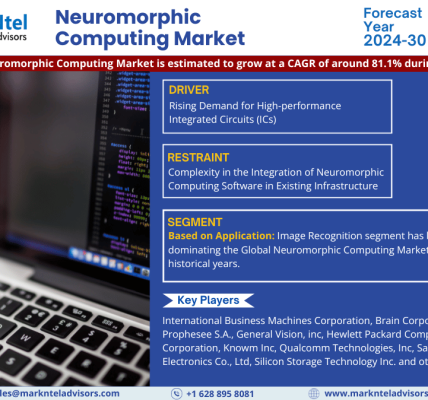-
Table of Contents
Revolutionizing Healthcare through Edge Computing: Tailoring Medicine for Every Individual
Edge computing and precision medicine are two emerging technologies that have the potential to revolutionize the healthcare industry. Edge computing refers to the practice of processing and analyzing data at or near the source of generation, rather than relying on a centralized cloud infrastructure. On the other hand, precision medicine aims to tailor medical treatments and interventions to individual patients based on their unique genetic makeup, lifestyle, and environmental factors. By combining the power of edge computing with the principles of precision medicine, healthcare providers can personalize healthcare delivery, improve patient outcomes, and enhance overall healthcare efficiency.
The Role of Edge Computing in Personalized Healthcare
Edge Computing and Precision Medicine: Personalizing Healthcare
In recent years, there has been a growing interest in personalized healthcare, an approach that tailors medical treatments and interventions to individual patients. This shift towards personalized medicine has been made possible by advancements in technology, particularly in the field of edge computing. Edge computing, a decentralized computing model that brings data processing closer to the source of data generation, has emerged as a crucial tool in the realm of personalized healthcare.
The role of edge computing in personalized healthcare is multifaceted. One of its primary functions is to enable real-time data analysis and decision-making at the point of care. Traditionally, healthcare data has been stored and processed in centralized data centers, leading to delays in accessing critical information. With edge computing, however, data can be processed locally, reducing latency and enabling healthcare providers to make informed decisions in real-time.
Furthermore, edge computing plays a vital role in ensuring data privacy and security in personalized healthcare. As medical data becomes increasingly digitized and interconnected, the risk of data breaches and unauthorized access becomes a significant concern. By processing data locally at the edge, sensitive patient information can be kept within the confines of the healthcare facility, minimizing the risk of data breaches and ensuring patient confidentiality.
Another key aspect of edge computing in personalized healthcare is its ability to support the Internet of Medical Things (IoMT). The IoMT refers to the network of medical devices and sensors that collect and transmit patient data. These devices generate vast amounts of data that need to be processed and analyzed in real-time to provide personalized healthcare interventions. Edge computing allows for the efficient processing of this data at the edge of the network, reducing the burden on centralized systems and enabling faster and more accurate decision-making.
Moreover, edge computing facilitates the integration of artificial intelligence (AI) and machine learning (ML) algorithms into personalized healthcare. AI and ML algorithms have the potential to analyze large datasets and identify patterns and correlations that can inform personalized treatment plans. However, these algorithms require significant computational power and low latency to function effectively. Edge computing provides the necessary computational resources and reduces latency, making it an ideal platform for deploying AI and ML algorithms in personalized healthcare settings.
In addition to its technical capabilities, edge computing also has the potential to improve healthcare access and delivery in underserved areas. Many remote and rural communities lack access to reliable internet connectivity and centralized healthcare infrastructure. By leveraging edge computing, healthcare providers can bring advanced medical technologies and personalized healthcare interventions to these communities. Edge computing enables local data processing and storage, reducing the reliance on internet connectivity and centralized systems, and ensuring that healthcare services can be delivered even in resource-constrained environments.
In conclusion, edge computing plays a crucial role in personalizing healthcare by enabling real-time data analysis, ensuring data privacy and security, supporting the IoMT, integrating AI and ML algorithms, and improving healthcare access in underserved areas. As personalized medicine continues to gain traction, the adoption of edge computing in healthcare settings is expected to increase. By harnessing the power of edge computing, healthcare providers can deliver more efficient, effective, and personalized care to patients, ultimately improving health outcomes and transforming the healthcare landscape.
Leveraging Edge Computing for Precision Medicine Applications
Edge Computing and Precision Medicine: Personalizing Healthcare
In recent years, there has been a growing interest in leveraging edge computing for precision medicine applications. Precision medicine aims to tailor medical treatments and interventions to individual patients based on their unique genetic makeup, lifestyle, and environmental factors. By combining the power of edge computing with precision medicine, healthcare providers can deliver personalized care that is more effective and efficient.
Edge computing refers to the practice of processing and analyzing data at or near the source of generation, rather than sending it to a centralized cloud or data center. This approach offers several advantages in the context of precision medicine. Firstly, it reduces the latency associated with transmitting data to a remote location for analysis. This is crucial in time-sensitive medical scenarios where quick decision-making is essential. By processing data at the edge, healthcare providers can obtain real-time insights and make immediate treatment decisions.
Furthermore, edge computing enables the collection and analysis of large volumes of data from various sources, such as wearable devices, sensors, and electronic health records. This wealth of data can provide a comprehensive view of a patient’s health status, allowing healthcare providers to make more accurate diagnoses and develop personalized treatment plans. For example, by continuously monitoring a patient’s vital signs and analyzing the data at the edge, healthcare providers can detect early warning signs of a deteriorating condition and intervene promptly.
Another benefit of leveraging edge computing for precision medicine is enhanced data privacy and security. With the increasing concerns about data breaches and privacy violations, it is crucial to protect sensitive medical information. By processing data at the edge, healthcare providers can minimize the need to transmit sensitive data to external servers, reducing the risk of unauthorized access. This approach ensures that patient data remains secure and confidential, instilling trust in patients and healthcare providers alike.
Moreover, edge computing enables the integration of artificial intelligence (AI) and machine learning (ML) algorithms into precision medicine applications. AI and ML algorithms can analyze large datasets and identify patterns and correlations that may not be apparent to human clinicians. By deploying these algorithms at the edge, healthcare providers can leverage their predictive capabilities to identify patients at risk of developing certain diseases or adverse events. This proactive approach allows for early intervention and preventive measures, ultimately improving patient outcomes.
However, there are challenges associated with leveraging edge computing for precision medicine. One of the main challenges is the need for robust and reliable connectivity. Edge devices must be able to communicate seamlessly with each other and with the central healthcare infrastructure. This requires a reliable network infrastructure that can handle the increased data traffic and ensure low latency. Additionally, edge devices must have sufficient computational power and storage capacity to process and analyze the data locally.
In conclusion, the combination of edge computing and precision medicine holds great promise for personalizing healthcare. By processing and analyzing data at the edge, healthcare providers can deliver real-time insights, make accurate diagnoses, and develop personalized treatment plans. Edge computing also enhances data privacy and security, while enabling the integration of AI and ML algorithms into precision medicine applications. Despite the challenges, the potential benefits of leveraging edge computing for precision medicine make it an exciting area of research and development in healthcare.
Enhancing Patient Care through Edge Computing in Precision Medicine
Edge Computing and Precision Medicine: Personalizing Healthcare
In recent years, the healthcare industry has witnessed a remarkable transformation with the advent of precision medicine. This innovative approach to healthcare aims to tailor medical treatments and interventions to individual patients based on their unique genetic makeup, lifestyle, and environmental factors. Precision medicine holds great promise in improving patient outcomes and reducing healthcare costs. However, its successful implementation requires the integration of advanced technologies, such as edge computing, to enhance patient care.
Edge computing, a decentralized computing paradigm, brings computation and data storage closer to the source of data generation. Unlike traditional cloud computing, which relies on centralized data centers, edge computing enables real-time data processing and analysis at the edge of the network, closer to the patient. This proximity allows for faster response times, reduced latency, and improved reliability, making it an ideal solution for precision medicine.
One of the key benefits of edge computing in precision medicine is its ability to handle the massive amounts of data generated by genomic sequencing and other high-throughput technologies. Genomic data, which provides valuable insights into an individual’s genetic predispositions and potential response to treatments, is incredibly complex and requires significant computational power for analysis. By leveraging edge computing, healthcare providers can process and analyze genomic data in real-time, enabling faster and more accurate diagnosis and treatment decisions.
Furthermore, edge computing facilitates the integration of diverse data sources, including electronic health records (EHRs), wearable devices, and environmental sensors. These sources generate a wealth of data that, when combined and analyzed, can provide a comprehensive view of a patient’s health status. For example, wearable devices can continuously monitor vital signs, activity levels, and sleep patterns, while environmental sensors can capture data on air quality and pollution levels. By aggregating and analyzing this data at the edge, healthcare providers can gain valuable insights into a patient’s overall health and make personalized treatment recommendations.
Another significant advantage of edge computing in precision medicine is its potential to enable real-time monitoring and intervention. With the ability to process and analyze data at the edge, healthcare providers can continuously monitor patients’ health status and intervene promptly when necessary. For instance, in the case of chronic diseases, such as diabetes or hypertension, edge computing can enable the development of smart monitoring systems that detect early warning signs and trigger timely interventions. This proactive approach can help prevent disease progression, reduce hospitalizations, and improve patient outcomes.
Moreover, edge computing can enhance patient privacy and data security in precision medicine. By processing and analyzing data locally, at the edge, sensitive patient information can be kept within the healthcare facility’s secure network, minimizing the risk of data breaches. This is particularly crucial in precision medicine, where genomic data and other personal health information are highly sensitive and require stringent privacy protections. Edge computing provides a secure and reliable infrastructure for handling and storing such data, ensuring patient confidentiality and compliance with privacy regulations.
In conclusion, edge computing has the potential to revolutionize precision medicine and personalize healthcare. By bringing computation and data storage closer to the patient, edge computing enables real-time data processing, integration of diverse data sources, real-time monitoring, and enhanced patient privacy and data security. These capabilities empower healthcare providers to deliver personalized treatments and interventions, improving patient outcomes and reducing healthcare costs. As precision medicine continues to evolve, the integration of edge computing will play a pivotal role in transforming healthcare delivery and ushering in a new era of personalized medicine.In conclusion, edge computing has the potential to revolutionize precision medicine by enabling personalized healthcare. It allows for real-time data processing and analysis at the edge of the network, closer to the patient, which can significantly improve the speed and accuracy of medical diagnoses and treatments. By leveraging edge computing, healthcare providers can deliver personalized care tailored to individual patients’ needs, leading to better health outcomes and improved patient experiences.



